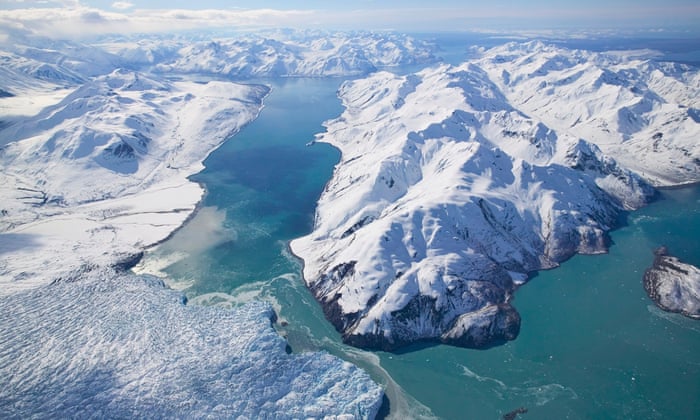Glacial Melt
"They aren't living things. But I do tend to anthropomorphize them."
"They have a unique character; they surprise you how they change. They develop personalities."
Shawn Marshall, glaciologist, University of Calgary
"What happens in the Arctic doesn't stay in the Arctic."
Judah Cohen, MIT climatologist
 |
| After recent reports about the demise of the ice fields, researchers hope the public will better understand the rapid pace of climate change. Photograph: RE Johnson / Design Pics/Getty Images/First Light |
Near the Matterhorn in Zermatt, Switzerland the Gormer glacier has been shrinking at a rapid pace. In 2007 that pace was recorded at 290 metres of recession. The glacier has since then continued its way up the mountain by approximately 30 metres annually, and as it does it reveals what lies beneath. A 40-year-old camera, a mitten, a human bone, the remains of two hikers and those of a father and son who had gone missing in 1967 were revealed in 2009.
Vanished hikers in the surrounding Alps and skiers, a Second World War bomber plane, Roman shoe nails, and countless pieces of mountaineering equipment have also been revealed as glaciers have surrendered their presence to melt. Bronze age artefacts (remember Oetzi, the Bronze Age mummified man who made headlines when he was discovered in the Italian Alps...?).
And then there is Canada where a recent report from Environment and Climate Change Canada revealed that the country's warming is twice the rate of the rest of the world (1.7C as opposed to 0.8C within the last 70 years). Greenland and Antarctica have more ice than Canada, but Canada's share of the world's glaciers is substantial, at number three.
 |
| On northern Ellesmere Island, warming land and sea temperatures have caused glacier melt to accelerate, according to new research. (Photo: Luke Copland) |
Between 2004 and 2015, according to a 2017 study out of University of California at Irving, the melt rate of glaciers on Queen Elizabeth Islands in Canada rose by a whopping 900 percent. Those glaciers are melting over 30 billion tons of ice into water on an annual basis. The National Oceanic and Atmospheric Administration in 2018 released the Arctic Report Card showing 95 percent of the oldest Arctic ice has vanished.
In the Canadian Rockies only three glaciers have been measured with the use of radar; the Athabasca, Peyto and Haig glaciers, the Athabasca being the largest in the Columbia icefield straddling the Great Divide at the northern end of Banff National Park. The most visited glacier in North America, the Athabasca glacier is in danger of wholly disappearing within two generations. The Peyto will be next.
 |
| An icefield in the Saint Elias Mountains, where melting is at its most rapid. (HO-Zac Robinson/The Canadian Press) |
Rocky Mountain glaciers will lose 80 to 90 percent of their volume by the year 2100, according to glaciologist Shawn Marshall, formerly Canadian Research Chair in Climate Change.
In West Antarctica, the Thwaites Glacier, the size of Florida, has become critically unstable to the point where if it melts it could result in a rise in sea level of over a metre on its own, according to climate scientist Michael Oppenheimer at Princeton. It could trigger instability to the extent that a chain reaction could ensue raising sea levels by three metres, engulfing Manila and Mumbai.
Glaciers' melt rate accelerates as they lose mass, becoming more vulnerable and with rising temperatures and more rain in place of snow, the melting process reveals rocky detritus, dark enough to attract the heat of the sun so that the rate of melt increases.
 |
| The Wedgemont Glacier, north of Whistler, B.C. Of the estimated 200,000 square kilometres of Canadian glaciers, one quarter is found in the west of the country, with the remainder in the Arctic. (Steve Hamilton) |
Labels: Alps, Arctic, Canada, Climate Change, Glaciers

<< Home